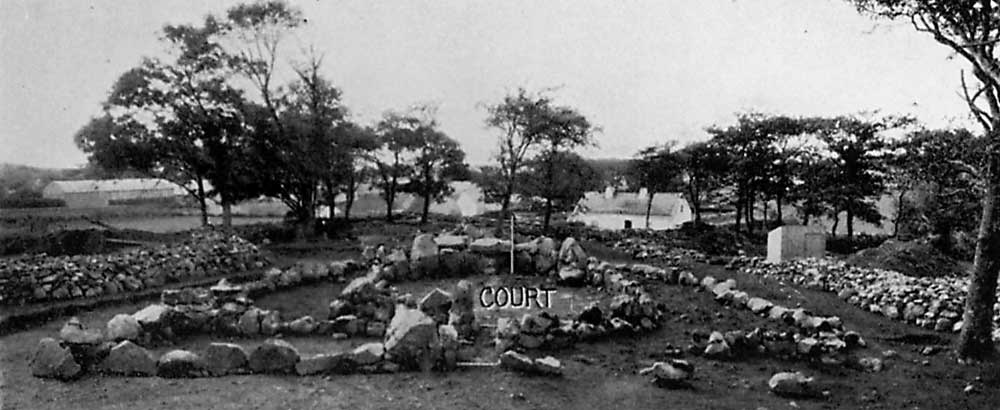Finds from Creevykeel
There were plenty of finds from the excavations at Creevykeel, dating to the original neolithic use and the early Christian period. Within the main chambers were four pits which had some token deposits of cremated bone - too few and fragmentary to say if they were a burial.
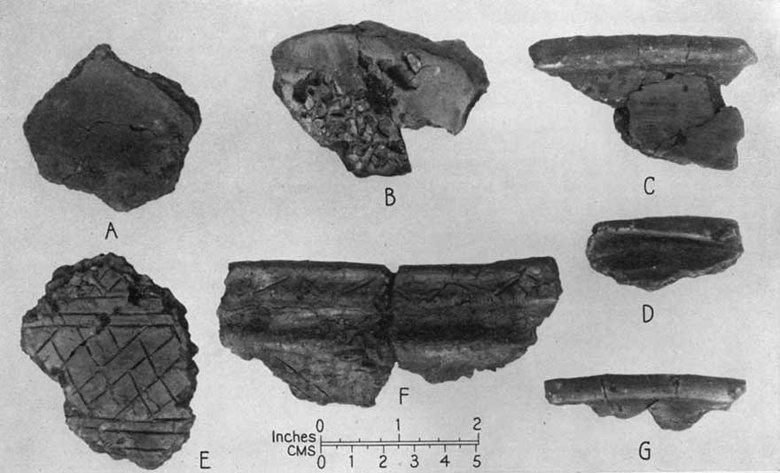
They may well have been animal bone remains from feasting. A piece of worked flint was found in one of the pits. Between the dividing stones that seperate the large chamber they found a polished stone axe. Other finds from the inner chamber included a large flint knife, about 13 cm long, arrowheads, pot sherds, some quartz crystals, and more flint scrapers.
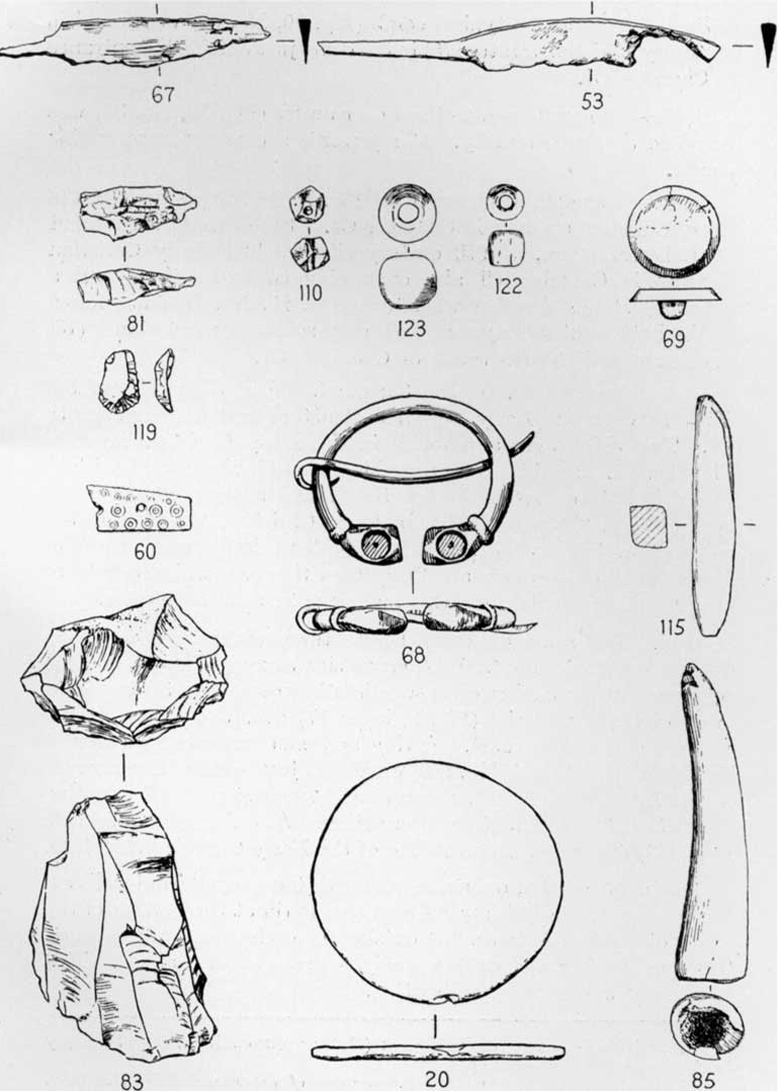
Of the three smaller chambers at the west end of the cairn, the badly damaged chamber B on the north side had many fragments of neolithic pottery, the remains of at least 8 pots. Chamber C contained only modern rubbish. Chamber D yielded some flakes of flint and some quartz chips.
Two polished neolithic axeheads were discovered, one from the chamber, the other from the entry passageway at the east end of the cairn.
There were plenty of finds from the early Christian period too. The chamber seems to have been unroofed at the time, and there was evidence it had been used: a layer of soil 40 cm deep with bones of ox and sheep and periwinkle shells. Lumps of iron slag and some bronze were found outside the entrance and some 70 pounds of slag were found in the bottom of the smelting pit. Three iron knives and a blue glass bead, and three fragments of pottery were also found. Hencken's plan of the main chamber at Creevykeel.
Excavations in 1935
Creevykeel was excavated between July 25 and September 4 1935 by the fourth Harvard archaeological mission, as part of the first scientific excavations in Ireland, and led by Hugh O'Neill Hencken. Twenty seven workers were involved in the dig, and the cairn material was removed entirely and then replaced. They found that the large structural chunks of sandstone are resting on the old ground surface, rather than placed in sockets.
Large areas of the court were paved with small flat slabs and in places, cobble stones. Sea sand from the nearby shore was also found. Evidence of large fires - cremated bone and charcoal were found in the court. It was also discovered that the monument was expanded several times. It began as a smaller monument with an open court, which was eventually enlarged and lengthened into a full enclosed court.
Revetments were found in the sides of the cairn, where there were probably drystone walls originally holding up the sides of the monument. This can also be seen in the alignment of the chamber and the passageway: they are not in line. The later entrance to the court is skewed more to the south. The actual passage is oriented to Arroo mountain. The two axis are marked on Hencken's plan, below.
A photo from Hencken's excavation at Creevykeel, showing all the cairn material removed.The round feature in the court proved to be an early Christian smelting pit, where metal was worked. This addition would have been added perhaps 4,000 years after the original construction of the monument. The Iron age and early Christian metalworkers appear to have liked working in ancient sites and unusual places such as megaliths and crannogs, and megalithic sites seem to have perhaps held magical properties in relation to metalwork. Another image of Creevykeel with the surrounding wall removed.
One of the stones on the north side of the court was pushed over to make way for the smelting pit, and another had holes cut into it, probably to secure some kind of covering over the metalworking area. Two hearths were discovered outside the circular structure.
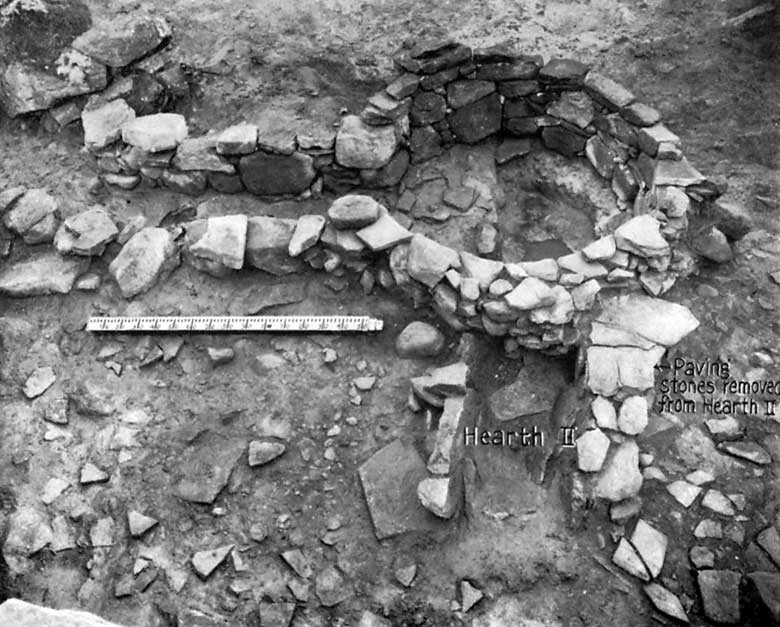
Photo from the excavation report.
They may well have been animal bone remains from feasting. A piece of worked flint was found in one of the pits. Between the dividing stones that seperate the large chamber they found a polished stone axe. Other finds from the inner chamber included a large flint knife, about 13 cm long, arrowheads, pot sherds, some quartz crystals, and more flint scrapers.
Of the three smaller chambers at the west end of the cairn, the badly damaged chamber B on the north side had many fragments of neolithic pottery, the remains of at least 8 pots. Chamber C contained only modern rubbish. Chamber D yielded some flakes of flint and some quartz chips. Two polished neolithic axeheads were found, one from the chamber, the other from the entry passageway at the east end of the cairn.
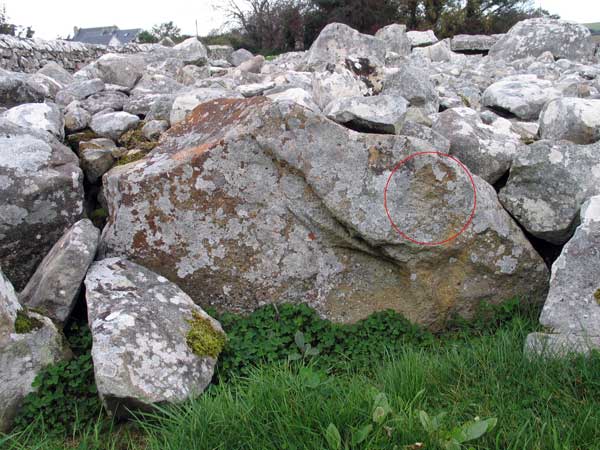
There were plenty of finds from the early Christian period too. The chamber seems to have been unroofed at the time, and there was evidence it had been used: a layer of soil 40 cm deep with bones of ox and sheep and periwinkle shells.
Lumps of iron slag and some bronze were found outside the entrance and some 70 pounds of slag were found in the bottom of the smelting pit. Three iron knives and a blue glass bead, and three fragments of pottery were also found.

